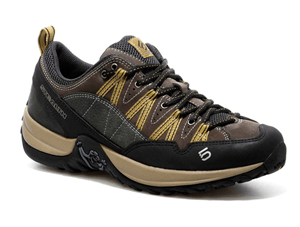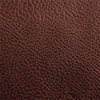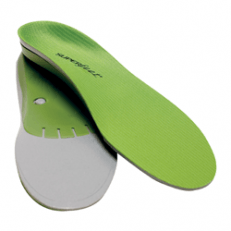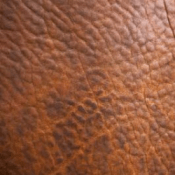Choosing the right outdoor shoe is one of the most important decisions for both the experienced and the less experienced hiker, backpacker or climber. The shoes you choose have to be comfortable, durable and provide stability and protection. The weight of a boot is not to be underestimated. The common consensus in the hiking worlds is that weight on your feet has even a bigger impact on energy cost and fatigue than weight on you back. In “The Backpacker’s Handbook” by Chris Townsend (a well famous and experienced long distance hiker) he says:
“The general estimate is that every pound on your feet equals 5 pounds on your back. If that’s correct, and it certainly feels like it, then wearing 2-pound rather than 4-pound boots is like removing 10 pounds from your pack.” Various other studies show the same effect if not in the exact ratio. So the effect of your shoes on your hiking experience can be quite big from the perspective of weight, let alone if the fit is not good or comfortable.
Here’s our guide of what you should know and think about when buying the best boots for your walking.
Salomon X-Ultra Mid GTX
Wandelschoen
Subjects in this GearGuide:
- Use
- Materials
- Construction
- Fit
- Insoles
- Maintenance & care
Use
As with most gear decisions, you should always begin with knowing what type of activity you will be using the product for. Each outdoor activity sets its own requirements for the shoes to be used. Manufacturers are increasingly responding to what the market demands, manufacturing specific products for specific activity demands.
Outdoor shoes can be divided into 4 basic categories. Therefore, start your search for the right shoes by focusing on the category that best suits your planned activities.
A – A/B Hiking
 In this category, you will find the most supple and flexible hiking shoes. The soles enable a good finish of your step, rolling your foot forward from heel-to-toe made easy, and have a maximum damping. This category of shoes is most suitable for light, simple walks. Also suitable for long distance walks in not too wet or difficult terrain. Shoes in this category are also great or Nordic Walking. These shoes are characterized by a more rounded sole and generally more cushioning and sports shoe kind of design.
In this category, you will find the most supple and flexible hiking shoes. The soles enable a good finish of your step, rolling your foot forward from heel-to-toe made easy, and have a maximum damping. This category of shoes is most suitable for light, simple walks. Also suitable for long distance walks in not too wet or difficult terrain. Shoes in this category are also great or Nordic Walking. These shoes are characterized by a more rounded sole and generally more cushioning and sports shoe kind of design.
Image: Five Ten Insight wandelschoen
B – B/C Trekking
 Shoes in the B category are mountain hiking boots with full ankle support for walks in moderately-challenging terrain up to rough trails in the high mountain range. For most hikers walking on or off the trails, this category of shoe (also called a soft walker) is most suitable. The hiker heading into rugged landscape or walks with a heavy backpack is better served choosing a shoe with thicker leather, a higher shaft and possibly a stiffer sole; B / C category.
Shoes in the B category are mountain hiking boots with full ankle support for walks in moderately-challenging terrain up to rough trails in the high mountain range. For most hikers walking on or off the trails, this category of shoe (also called a soft walker) is most suitable. The hiker heading into rugged landscape or walks with a heavy backpack is better served choosing a shoe with thicker leather, a higher shaft and possibly a stiffer sole; B / C category.
Image: Scarpa Kailash GTX trekkingschoen
C – Mountain boots
 A hiker who is used to making intensive multi-day mountain trekking in alpine terrain will need to look at boots this category. The boots in this category aim to the foot enough support in technical rocky terrain with heavy loads. The sole will be stronger and stiffer than a soft walker, and ankles will be heavily stabilized with a firmly built shoe.
A hiker who is used to making intensive multi-day mountain trekking in alpine terrain will need to look at boots this category. The boots in this category aim to the foot enough support in technical rocky terrain with heavy loads. The sole will be stronger and stiffer than a soft walker, and ankles will be heavily stabilized with a firmly built shoe.
Image: La Sportiva Trango bergschoen
D – Climbing boots
 These are shoes built with leather or synthetic materials that are ideal for the high alpine terrain and climbing activities. Within this category, there is a shoe for different specific activities. There are, for example, shoes that are especially suitable for classic alpinism and combined terrain. And then there are shoes that are more focused on ice climbing. The shoes are cramponnable and offer strong support and protection. This is a category with a lot of innovations from various brands.
These are shoes built with leather or synthetic materials that are ideal for the high alpine terrain and climbing activities. Within this category, there is a shoe for different specific activities. There are, for example, shoes that are especially suitable for classic alpinism and combined terrain. And then there are shoes that are more focused on ice climbing. The shoes are cramponnable and offer strong support and protection. This is a category with a lot of innovations from various brands.
Image: Salewa Pro Guide Insulated
Materials
 The materials used in a shoe or boot affect weight, breathability, strength, durability, and water tightness. Because shoes are made of different materials, performance can vary widely. Many experienced hikers will have a particular preference for a specific material.
The materials used in a shoe or boot affect weight, breathability, strength, durability, and water tightness. Because shoes are made of different materials, performance can vary widely. Many experienced hikers will have a particular preference for a specific material.
Image: split grain leather
Nylon mesh en split-grain leather
 Nylon and split-grain shoes are light and breathable, making them perfect for use in warm and normal weather conditions, but too light for more demanding hikes. They are more comfortable on your feet and are, in most cases, lighter than full-grain leather shoes. Nylon / split-grain generally cost less, but are usually less resistant to water than shoes of full grain leather. Even though models that are fitted with a waterproof lining can be just as waterproof.
Nylon and split-grain shoes are light and breathable, making them perfect for use in warm and normal weather conditions, but too light for more demanding hikes. They are more comfortable on your feet and are, in most cases, lighter than full-grain leather shoes. Nylon / split-grain generally cost less, but are usually less resistant to water than shoes of full grain leather. Even though models that are fitted with a waterproof lining can be just as waterproof.
Full-grain leather
Full-grain leather is exceptionally waterproof, durable and provides good support (more than nylon or split-grain leather). This is especially applied to shoes designed for extreme conditions, bearing heavy packs through difficult terrain. Less light and breathable than nylon / split-grain combinations, but definitely more durable. Shoes of full-grain leather should usually be well-walked in because they can feel hard and rigid.
Hoe a shoe deals with water is a very important factor to consider. When looking for shoes, take note of the distinction between the following:
Waterproof leather
This is leather that has been treated to make it waterproof. This is excellent material. However, do not forget that leaks can occur if the shoe is not properly assembled (glued/stitched).
Waterproof construction
This refers to techniques used to prevent leaks (such as seam sealing, special stitches, and precise designs). Waterproof structures are mainly realized by using water-resistant materials.
Waterproof liners and membranes
These are specially designed waterproof layers which are built into the shoe to add an extra measure of waterproofness. These membranes are a very effective way to ensure dry feet. However, remember that Gore-Tex, Hyvent, and other waterproof liners do not have eternal life. Gore-Tex is a microporous membrane, and if microscopic dirt gets in the pores it can affect the working of the membrane. An added advantage of these kind of membranes is that they provide extra breathability in some cases. Except when the outer layer of the shoe is not breathable of course.
Advice
The degree of waterproofness of your shoes depends on the quality of care of the shoes. Follow the maintenance instructions that come with your shoes to keep them in good condition and increase their lifespan.
Construction
Upper
The upper of the boot is the largest part of the boot that envelops your foot, keeps your feet warm, protects your feet and ankles, provides stability to your ankle (when the upper is high), keeps water out, and preferably allows your feet to breathe.
The more seams a shoe has, the greater the risk of leakage or wear and tear. Leakage occurs when water passes through the needle holes or spaces between the panels that are stitched together. Tearing often occurs during normal use by repeated bending of the material in the same place. Or a stitched section can snap, separating two panels from each other. In general, the fewer seams the upper work has, the more waterproof and more durable the shoe is.
Connection between top work and sole
The shoe soles are attached to the rest of the shoe by means of stitching or gluing.
Stitching
A durable and reliable method which also enables the sole to be easily replaced. Different stitching techniques have been developed and each technique has its own strengths and stiffnesses.
Glue
Faster and less expensive than stitching and results in lower shoe prices. Gluing has not always been reliable in the past, but nowadays most modern glue manufacturers produce durable glue compounds. This depends on the process and the type of adhesive used. In addition to that, glued soles can also be replaced these days.
Fit
Whether walking in the mountains, running on rough terrain or just walking in the city, shoes with the right fit are essential for comfort and healthy feet. The following tips and techniques can be useful in helping you find the right fit.
- The right shoe size
- Check the size
- Prevent fitting problems
Step 1: The right shoe size
It may seem logical, but your shoe size changes over time. So if it’s been a while since you measured your shoe size, it may not be a bad idea to do it again. Especially if you decide to purchase your shoes online.
If your feet are measured in a store be sure that an experienced employee measures your feet with a professional device and use this measurement as a starting point. If one of your feet is bigger than the other, make sure that you take your biggest foot as a guide to shoes.
Steps for online ordering shoes
For online ordering shoes, follow the steps below to determine your shoe size:
- Take a pen or pencil, a piece of paper and a tape measure
- Put on a pair of socks that you want to wear in the shoes that you plan to order for your planned activity (s). Keep in mind that your feet will swell throughout the day. It is therefore advisable to measure your feet at the end of the day.
- Grab a chair, sit down and place your foot flat on the piece of paper. Lean forward to exert a little pressure on your foot and draw the outline of your foot on the paper (often your feet are different, take the biggest foot.).
- Measure the length of the print from your foot from heel to the tip of your longest toe with a measuring tape.
- Use the size charts on the website you want to order from, to read which size corresponds to the measurement. If you’ve measured between sizes, take the largest. It is better to buy a pair of extra socks than to buy shoes that are too small.
Note
Sizes will differ from brand to brand. If you measure a size ten with one brand, that does not mean that you will automatically have the same size with another brand. Different shoes from different manufacturers have different sizes. Keep this in mind when using the size charts. Also, keep in mind that if you’re looking for a hiking shoe you always get a size (EU) bigger than your regular shoe size, which is usually proportional to your foot length. Depending on the activity, some people even get one and a half size bigger.
Step 2: Check the size
During the day your feet will swell. It is best to fit the shoes at the end of the day.
Check the fit. Put on the shoes, your heel well back agains the heel of your shoe, tie your laces and stand up. The shoe should feel pleasant around the ball of your foot and around the instep, but in such a way that you can move your foot forward without it becoming uncomfortable.
Since most people will have one foot slightly larger than the other, always try on both shoes. Try walking on both carpet and hard surfaces to get a feel of the shoe on different surfaces. If possible, walk from high to low on an inclined plane to check foot movement within the shoes. Also, check the movement of the foot at the heel and toes.
Then move upwards on the balls of your feet. And back onto your heels. Are the shoes moving well with the movement of your feet? Are they comfortable? Be sure that the shoe does not “lean” inwards. In the long run, the shoe will become softer with wear, but it should never start leaning inwards.
Your toes must be able to move freely in the shoe. To see if you have enough space, slowly move your foot into the shoe until you’re just touching the front of the shoe. Leave the laces open. In this position, you should have the width of a finger (about 1.5 cm) between the base of your heel and the shoe. When you put on the shoe and move your heel where it should be, you will have enough space to allow you to spread your toes to stabilize your feet. in addition to that the extra space it provides enough room for swelling your feet during wearing; It will also prevent the air circulation within the shoe from being blocked, which could result in cold feet.
Your heel should stay in place. After your laces are closed, there should be no more than ½ cm of movement at the heel. If there is more movement, it can cause friction that in turn can cause blistering. A good fit will also prevent your foot from sliding forward from walking downhill. If you feel like your foot is too loose or “floating” in the shoe you should probably try half a size smaller.
Step 3: Prevent fitting problems
A higher instep, longer second toes etc. All these common inconveniences can make finding the right shoe a painful and frustrating journey in itself. Most of these issues, however, can be quite easily resolved.
Expert staff can stretch and mold your shoes with special tools to fit your feet.
You can also use an insole which will not only help protect and support feet but also fill extra volume in a shoe if a shoe is just too big. Try to use an insole if you can move your heel too much or if you notice your toes slowly sliding forward. Supporting insoles can also prevent lateral movements such as pronation and supination, as well as fatigue, blisters and other motion-related discomforts.
Do not forget about socks. They also help to fill excess volume in large shoes. Make sure you try on the shoes with the socks you are going to wear in the shoes.
Various lacing techniques can solve many problems. For example, a high instep might cause the shoe to fit too tight. You can solve that by skipping one or more lacing eyes from the top of your foot.
Insoles
 You might not expect it, but using a good (stabilizing) insole can make all the difference when it comes to comfort. Good insoles improve the health of your feet.
You might not expect it, but using a good (stabilizing) insole can make all the difference when it comes to comfort. Good insoles improve the health of your feet.
Image: Superfeet Green binnenzolen
Good insoles help reduce complaints such as foot cramps, burning sensation, swollen ankles, blisters, pressure points, shinsplints (shinbone inflammation) and sliding in the shoe. In addition, your feet feel less tired. It is important that the insoles are properly positioned.
Feet
- On average, we make 8,000 to 12,000 steps a day
- Each foot has 28 bones
- For millenia mankind always walked on uneven terrain
- A large part of the population has pronation
- Women have four times more foot problems than men
Choices
There are a number of brands that have various models of insoles to enhance the fit and comfort of different types of shoes. For example, a mountain shoe has much more volume and has a different model than a regular shoe or a trainer. With this as a starting point, you choose a high-heeled sole as well as ski, work and ski boots that aim to reduce the volume in the shoe and make the shoe fit closer with the foot. There are even soles with Merino wool in it to hold extra heat inside the shoe.
Despair
Generally, people have to give their feet and legs some time to get used to the extra support that insoles provide. Stiff insoles provide the most support. So it’s advisable to wear new insoles 2-3 hours a day for the first 5-10. If you go running that should be 20-30 minutes. When you use them for the first time, do not do this during a long walk or run. Ease into it.
Durability
On average a good insole should last for 18-24 months depending on the usage and quality of the shoes in which they are worn. Insoles can be cleaned with warm water and soft soap.
Maintenance & care
Good maintenance will increase the life-span of your boots significantly. Keep your shoes clean by brushing off the dirt and mud. Both can shorten the life-span of the leather. Most shoe materials can be cleaned with a (mild) soap and (cold) water, although leather soap can damage the impregnation of certain types of leather. In any case, you should certainly avoid using abrasive detergents.
Make sure your shoes stay “in condition” by taking care of them from time to time. This is especially true for leather shoes. If you do store them away for a while, make sure you treat your leather shoes with a good dose of impregnation spray or leather grease so that the leather does not dry out.
Avoid using oil for treating leather for outdoor sports shoes. Oil-based products make the leather soft and supple, which can adversely affect the support of the shoe. Use wax and silicone-based products.
Drying your hiking shoes
If possible, dry your shoes after each trip. If your shoes are soaked, put paper into the shoes and and allow them to dry in a warm place. You might have to change the paper a few times. You may have heard about using newspaper for this drying technique, but there are some sources who advise against it, certainly if you have Gore-Tex shoes. This seems to be because the ink of the newspaper might dissolve in the water that soaks into the newspaper and conversely get into the micro-pores of the Gore-Tex membrane. SO if you want to be safe, use paper without print on it. Modern kitchen paper towels serve this goal really well.
Never shorten the drying process by placing the shoes in open fire, heating or other heat source.
Note
If your shoes are wet and dirty, try to dry them first and brush off the dirt.

